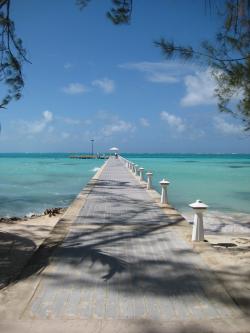jks
About
- Username
- jks
- Joined
- Visits
- 31,415
- Last Active
- Roles
- Member, Administrator, Moderator
- Points
- 294
Reactions
-
firefox last rev gives chopped audio\waterfall on win7pro32b [fixed with browser site data clear]
-
BBAI Cannot connect via web browser after build - A little help needed
Okay, all should be good now (except for my splitting headache). I'm not 100% sure because it won't let me stay logged in for more than a few seconds (BT bastards). And your router isn't forwarding port 8073 connections to the new local ip address of course.
Sure enough, the Beagle guys made an incompatible change in how the .dtb file is loaded by Uboot. I'll have to figure out a change to support it.
-
KiwiSDR-antenna-switch-extension
There is a new version of the antenna switch extension available.
Important installation notes:
- Let your Kiwi update to v1.449 first.
- Use my repo, not Kari's, until he merges my changes (e.g. via "gclone" command below).
- Install can be accomplished from the Kiwi admin page "console tab".
Get a Linux shell either using the admin page console tab or ssh/PuTTY directly into your Kiwi. Type:
cd [changes to "/root" directory]
mv KiwiSDR-antenna-switch-extension K.old [set old copy aside]
gclone KiwiSDR-antenna-switch-extension [gets new version from github.com]
cd KiwiSDR-antenna-switch-extension
bash ./ant-switch-extension-installer
[pick your switch device from list or "beagle-gpio" if just experimenting]
[if running from console tab: you'll see a message to that effect]
[wait a few minutes while build messages scroll by]
[if running from console tab: it will ask that you restart via the button on the admin control tab]
New features and fixes:
- Can limit access three ways: local connections only (owner/admin effectively), local connections plus users connecting with a password (for Kiwis with split user password access), everyone can access. For the split password case you must add "&p" to the URL as described here: http://kiwisdr.com/quickstart/index.html#id-user-urlp-prot
- Support for KMTronic LAN Ethernet IP 8 channels WEB Relay device. https://info.kmtronic.com/kmtronic-lan-ethernet-ip-8-channels-web-relay-board.html
- Other user connections are notified via a popup when the antenna is changed. The popup closes automatically after 3 seconds. This may need some refining. There has also been the suggestion that an autoscale be performed on an antenna switch if in auto aperture mode.
- Message is displayed to user if antenna switch parameters have not yet been configured by admin.
- Installation time is much faster as entire Kiwi software rebuild is no longer done.
-
v1.443: automatic SNR measurement, queue/camp panel reload button, misc fixes
v1.449 April 3, 2021
SNR measurement adjustments on admin page control tab:
Adjust recording interval: 1, 4, 6 or 24 hours per measurement.
One week's worth of data is retained in the rolling buffer.
New JSON field "seq" (incrementing) to help identify most recent entry.
In addition to existing frequency measurement intervals 0-1800 and 1800-max kHz
added 0-1800, 1800-10000 10000-20000 and 20000-max
These are similar to what Marco uses (sibamanna.duckdns.org/sdr_map).
Selectable local/UTC timestamp.
-
sd card problem during backup
If the Linux "lsblk" command doesn't see the mmcblk1 device (note "1", not "0" which is the on-board filesystem) then as far as Linux is concerned the sd card isn't plugged in (or recognized). The Kiwi software has nothing to do with it at that point. That's why the lsblk command is run in the script -- to show that state of the sd card before doing anything.
So while everything is still running try pushing on the sd card to eject (unlatch) it, then re-seat it and try the backup again. I sometimes find I have to do this a couple of times. I don't know why.
-
v1.443: automatic SNR measurement, queue/camp panel reload button, misc fixes
From the CHANGE_LOG file:
v1.443 March 22, 2021
Added automatic SNR measurement:
Every 6 hours (4 times daily) a Kiwi will connect to a free channel (if available)
and measure its own SNR. These results are available in JSON format from the
URL: my_kiwi:8073/snr (adjust Kiwi name and port number as required).
This URL is publicly accesible. Disable on the admin page, control tab if you
don't want to share this information.
The measurement details can be easily changed. Suggestions welcome.
SNR is currently defined in the same way as used by the sites snr.kiwisdr.com
and snr2.kiwisdr.com, i.e. waterfall dBm values, sorted, noise = 50th percentile
value (median), signal = 95th percentile value, SNR = signal - noise.
Two measurement bands are recorded: 0-30 MHz and 1.8-30 MHz in an attempt to
filter out the AM BCB. The JSON data also contains min/max dBm values and a
timestamp (local time unless the "UTC" value is set).
Added "reload page" button to queueing panel ("camp" parameter is removed from URL)
Use to quickly access any Kiwi redirection that might be available.
Autoscale button and aperture auto mode now disregard masked areas from calculations.
Admin page UI changes:
GPS RSSI now red color for sats not actually acquired (i.e. no subframe decoding)
Registration now requires a valid location field (for benefit of map.kiwisdr.com)
-
How to connect via wifi
-
KiwiSDR fails to update from 1.390 to current 1.442 [bad filesystem, fixed]
It's a huge headache to construct sd card images of the current release. So I don't do it often. v1.390 was the last. We all depend on the autoupdate over the network.
The build is progressing now, but very slowly. Something seems to be taking a lot of cache space in main memory. I don't understand why. There are no processes that seem out of place.
-
How to connect via wifi
A USB-to-WiFi dongle is a lot of work and grief unless you know what you're doing.
A much easier solution is to use a wired-Ethernet to WiFi mini-router: https://www.tp-link.com/en/home-networking/wifi-router/tl-wr802n More info here: http://forum.kiwisdr.com/index.php?p=/discussion/1653/connecting-kiwi-via-wifi/p1
The worst problem there is dealing with the required 5V power input as the supplied adapter is a potentially noisy switcher. Although you might be able to get 5V from the BBG/BBB USB-A "host" port. Anyone actually doing that?
-
Ham Band Limits for ITU Region 1 are not correct (40 Meter Band [should be fixed in v1.440]
There is a fix for this in the next update. It's tricky because Kiwi owners may have arbitrarily edited the definition of bands[] in config.js in ways that my fix may not have anticipated. Although my fix tries to take this into account.
The whole situation will be better addressed when the contents of config.js are absorbed into the admin user interface and config database. But that's a complicated change that will not happen anytime soon.





